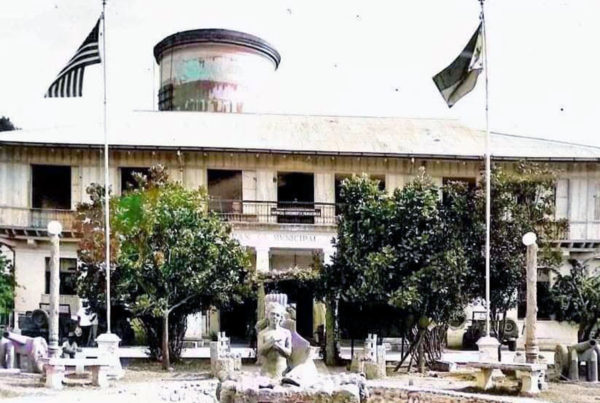Burp of remembrance

By Rex Catubic
CULTURAL heritage comes also in the form of culinary heritage—culinary practices and heirloom recipes handed down across generations. Their no-frill preparations, flavor and taste, hark back to halcyon times and recall happy moments of one’s youth.
In every barrio, there is always a chef or two who lord over feast and banquets—wedding, fiesta, “binyag”, “pagatin”, “bakas”—any occasion of import that requires food for a multitude. A “punsya” in the barrio involves not only the invited guests, but ipso facto, becomes a village celebration—where neighbors congregate to be counted among the host’s circle and lend their support by partaking of the “tarya”.
And even before “Sharon” became the norm in today’s party setting, the barrio folk had devised the ingenious way of passing food “over the bakod”. “Ibuntok labat ed biek na alar”.
Just throw it over the fence where a catcher is ready for the loot.
Despite this folksy shenanigan, the host family never runs out of food. There is always an abundance kept in “palanggana” and “talyasi” and covered with banana leaves. And because refrigeration is unheard of, it is only by the grace of God that spoilage is rarely an issue.
It’s a tribute to the master cooks like Mama Basilio and Mama Acos in our barrio, that they manage to keep food handling remarkably well. “Agara nababanglesan”. Their food never go stale or spoiled.
Yet it occurs to me as rather strange now, that though our barrio is flanked by the river and fishponds, Bangus is never a part of the repertoire. If there is a fish entrée, it comes as “escabeche” Lapu-lapu, or Pampano. Shrimps do not make it to the table, being merely a daily fare. But Bingalo is top attraction.
Cooking is done in the backyard. It is a communal undertaking where village folk volunteer to do odd chores–dressing of chickens, peeling and dicing of ingredients; washing and cooking rice, setting up fire for cooking, “manasol na danom” or getting water from the “gripo” or pumping from the “tuato”, and all the other myriad tasks in cooking.
Cooking itself utilizes clay “dalikan” fired with dried tree branches or lumber pieces. For bigger food portions, big rocks form a base for giant “talyasi”.
Slaughtering of pigs or “manpatas na baboy” is also done right there—akin to ritual sacrifice, the wild shrieks of the hogs in the dead of the night or the wee hours are the siren call for the commencement of the “Punsya” preparations, followed by the incessant rat-tat-tat chorus of cutting and chopping on wooden blocks and tables.
And yet no one among the neighbors complain. It is an accepted noise disturbance, the high decibels do not bother their dreams. It is the reveille of a vibrant people in a vigorous village.
At the break of dawn, steaming coffee is passed around in sartin cups called “losa”. There is no sight of yawning even as the roaming cocks break into a medley of crows.
The tables are now ready to be dressed in starched white “ules” or bed blankets. The porcelain plates and “kubiertos” are neatly laid on the table. Dishes are served in “bandejado” right on the table, there is no buffet. For the “miron” or bystanders, plates filled with a couple of entrees are allocated.
Dessert is always oval leche plan. Sometimes, molded “gulaman” with raisins or “fruit cocktail”. But “pontin kantong” is plentiful.
As the “punsya” goes on, music on 75 rpm vinyl records blares on horn loudspeakers. No one sings along. The music just cascades in the morning sun.
By noon, it’s time to wash the “kaldero” “kawali”, and talyasi. The clanking of metal utensils and the arpeggio of porcelain plates striking against one another proclaim a percussive symphony of success—the talk in Bingo games for days, a sure bet in jueteng.
Share your Comments or Reactions
Powered by Facebook Comments











